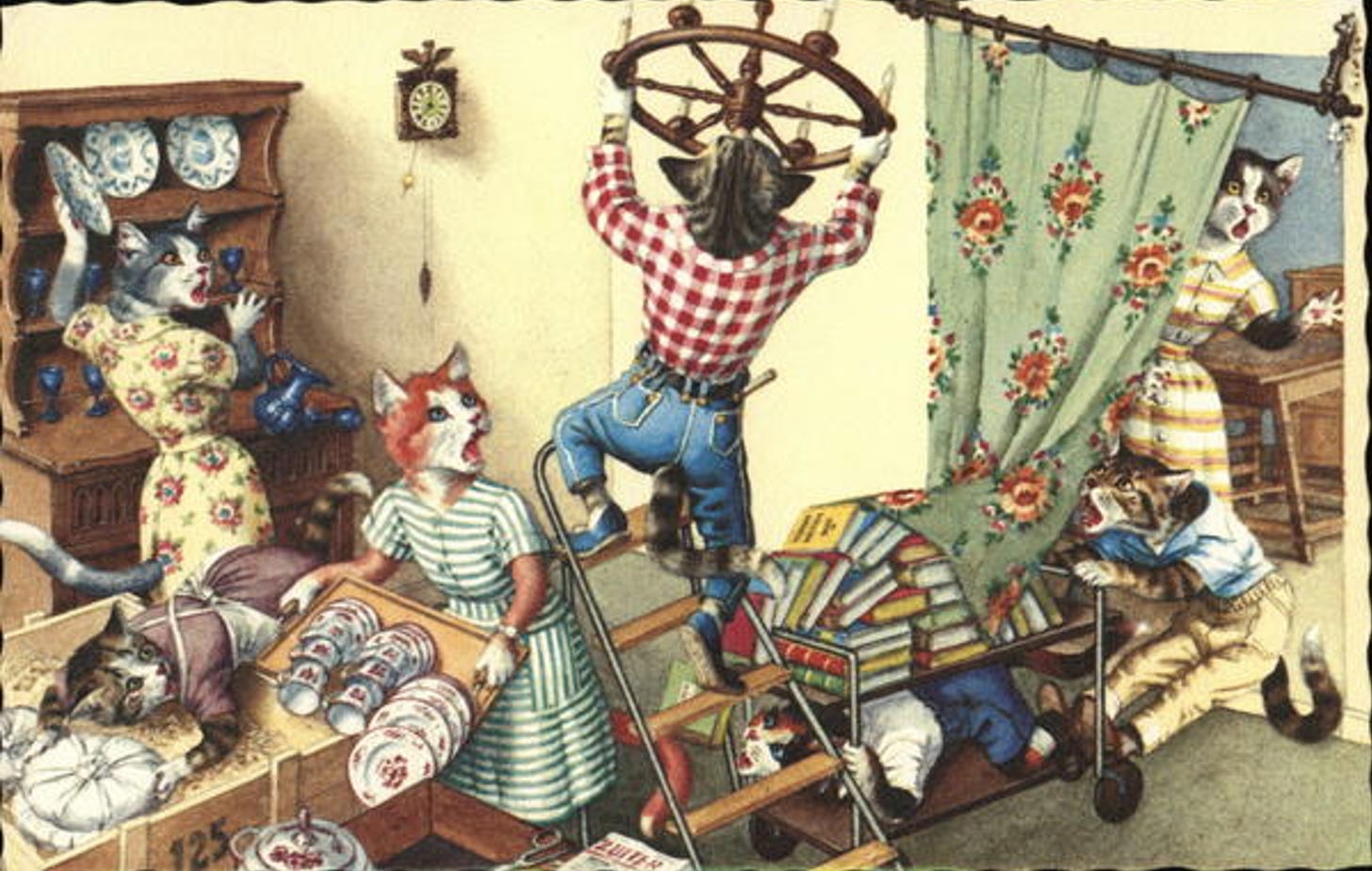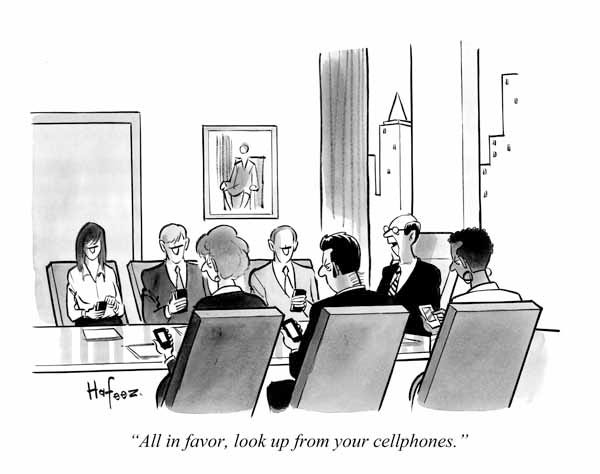Group decision-making in coliving
Hint: It ain't democracy.
Side note: We’re on Product Hunt today! If you find these posts useful and want to help others discover them, please show us some <3
“BUT HOW DO YOU MAKE DECISIONS?”
This is about as common a question as we get.
The person asking this question usually has one of two nightmarish visions in mind:
Nightmare Vision 1: Having to ask permission for everything.

Nightmare Vision 2: Absolute chaos and anarchy.

Both of these nightmare are easily avoidable with some basic principles.
How you make decisions determines, to a large extent, who you are as a community. It’s a foundational part of your DNA. It will determine who wants to join your community and how they behave in it.
Trade-offs abound. You can optimize for efficiency, you can optimize for having minority voices heard, you can optimize for individual empowerment. But you can’t optimize for all of them at once.
Your community can be highly deliberative. Or it can be highly generative.
Your community can surface all viewpoints. Or it can cherish momentary impulse and inspiration.
Your community can create clear structure and process. Or it can be fluid.
So how do you decide how to decide? That’s what this post is about.
Different decisions = different buy-in
Most coliving communities don’t have a single decision-making paradigm. They have multiple paradigms tailored to the magnitude of the decision.
There’s a big difference between deciding which toaster to buy and whether you should run a day care.
A principle to live by: Coliving decision-making is the art of getting as much buy-in as is truly necessary, but never more. Each community will have its own definition of “truly necessary.”
I adopted (and slightly modified) this lovely framework from the Conscious Leadership Group.

Let’s define each of these quickly:
Individual: A single person makes the decision with no input. This could be the “leader” or a self-appointed individual. We’ll talk about who this person is in the next section.
Individual with input: A single person hears other people out, but still makes the decision themselves.
Sub-group: A portion of the group makes the decision, e.g. “Fred and Suzie, you two decide”
Sub-group with input: Same as above except they also solicit input from rest of the group.
Majority: Here’s the ole democracy we know and sometimes love. Put it to a vote. Majority decides.
Consensus: Everyone votes. No one is opposed to the decision
Alignment: Everyone votes. Everyone is in complete affirmative agreement with the decision (note: stronger than simply not opposing)
So what level of buy-in is appropriate for a given situation? Here are factors that might necessitate higher levels of buy-in:
The decision is highly impactful (e.g. doubling everyone’s community dues)
The decision is non-reversible (e.g. demolishing the deck to plant a garden)
The decision has downsides with impact individuals unequally (e.g. installing a drum studio next to one person’s room)
What a Individual Decision looks like in practice
First, who is the individual?
In a corporation, this might be the boss. In a coliving community, there may be a leader (or a leader of a function such as “person who handles the finances”). Sometimes this person makes a decision.
But more often than not, the individual decision-maker is self-appointed.
In many communities, self-appointed individual decisions are the most common decisions. This type of decision-making has a name: Do-ocracy.
We are quite fond of the concept of do-ocracy. We’ll likely extol its virtues in a later post. But for now, let’s just define it.
Do-ocracy empowers individuals to make decisions in the absence of a formal hierarchy.
Do-ocracy is declaring yourself the individual who makes a given decision. For example: “I want to do something about the garden.” Congrats, by saying that you are now Chairman, CEO, Generalissimo(a), and Supreme Dictator of the garden! Now you can make the decision.
What a Consensus decision looks like in practice
Consensus decisions usually take place in one of two arenas: 1) In an in-person group meeting 2) asynchronously and digitally somewhere like Slack.
Here is what it ends up looking like in Slack:

In-person consensus decisions might happen in a weekly, bi-weekly, or monthly community meeting. At Radish, we do bi-weekly. You discuss the thing the old fashion way and then all raise your hands and say “aye.”

Tip for in-person consensus-gathering: Vote first, then discuss, then vote again. Often you waste a lot of time discussing something that everyone already agrees on. Seeing where everyone stands first can short-circuit a lot of deliberation, avoid overweighting input from talkative people, and keep the group sane.
Case study: “The Senate” - A mix of Consensus and Majority decision-making.
It’s worth mentioning one system that we like, pioneered by The Archive in San Francisco.
Like many coliving spaces, The Archive initially had weekly house meetings. These could take a long time, it was hard to nail down a time when everyone was free, and even though everyone in the house enjoyed each others’ company, the meetings ended up feeling like a chore.
The solution that evolved, which they dubbed “The Senate,” is useful for a few reasons:
It is asynchronous, so people can participate when they’re free rather than blocking off a specific time in their calendar.
Decisions are made quickly, usually within 3-4 days.
It provides a written record of not just what, but why decisions were made.
The Senate is a Slack channel where people propose solutions to problems the house is facing. Forcing people to propose solutions helps keep the channel action-oriented: instead of saying just ‘Our front door gate isn’t closing properly and I worry about deliveries being stolen’, someone writes ‘Our front door gate isn’t closing properly and I propose buying this $100 smart lock and hiring this handyman for $100 to install it.’ Each open issue is pinned to the top of the Slack channel.
Every member of the house must vote on open issues by the semi-weekly deadline (Wednesday and Sunday). People can use the thread function on Slack to discuss modifications/feedback on the proposal, i.e. ‘I can install the smart lock for us and save the $100 handyman fee.’ People then vote using a series of emoji:

There are a number of other tools out there to help with decision making, from Slack polls to tools like Loomio.
A few other case studies:
RGB (San Franciscio - rented)
Individual (do-ocracy): Any reversible decision or expenditure under $50
Sub-group (lease holders): Cancelling the lease and ending the community
Majority: Asking a member to leave the community
Consensus: Changes to financial obligations (dues), admission of new members
Radish (Oakland - owned by residents and investors):
Individual (do-ocracy): Any reversible decision or expenditure under $50
Sub-group (2 LLC Managers): Decisions around the property, such as when to sell and whether to build a new building
Majority: $$ spend over $75
Consensus: Admission of new members
The Embassy:
It’s worth mentioning a fascinating experiment conducted by the resident scientists at The Embassy. They rotated their decision-making framework each month and measured the community’s happiness as this happened. Give it a read!

Phil’s editorial viewpoint

Allow me to mount the soapbox…
I tend toward the fluid, anarchic, high-trust, and individually empowering end of the spectrum.
My two cents:
Push as many decisions as possible to the individual rather than the group. Individual empowerment is an important driver of ownership, fulfillment, and self-worth in a community. Challenge people to trust each other more than they are trained to do. People will stretch their trust after seeing good outcomes and this is a boon for a community.
Create easy channels to give input, but avoid making input a blocker. Make clear input is NOT a veto and NOT mandatory to address, it’s merely input.
You should be 10x more concerned about people not doing things than people doing the wrong things. In a healthy community, people do overwhelmingly good things. And your primary job is to get people to do more things, not police the doing of “bad” things. People know not to shit where they eat.
A community where 100 things happen and 90 of them are good is a healthier community than one where 10 things happen and all 10 are good. You should focus more on upside of the 90 good things than downside of the 10 bad things. This means removing points of friction from decision-making, applauding the good things, and also celebrating bad decisions that are done in the right way.
You should be more concerned with making the doers happy than the critics. This can be hard because the critics are louder.
There are certain decisions that are good ritual and hygiene to do as a group in person. These include anything that involves changes to people’s financial contribution and admission of new members to the community.
No one joins a community to deliberate. They join a community for the pleasure of each other’s company. Minimize deliberation where possible. Deliberation has its place, but you should be spending more time as a group bonding than deliberating.
Gillian’s editorial viewpoint on the above:
In the ideal community, I agree with everything Phil says above. The danger is that without guardrails, a bad actor - or a subgroup of people with a specific desire - can wreak havoc on the community.
I know, you’d think that the people you choose to live with won’t be bad actors. They’re probably already your good friends. But sometimes good people can have a period of time when they’re going through heavy stuff that has nothing to do with the house, and it leads them to put their own demands over the best interests of the group. Or two people who are both great end up at loggerheads on a specific issue and divide the community. (A common example of this is when a couple breaks up and both want to stay in the community, but don’t want to live with each other).
This is why I believe there should be some form of written document that everyone in the community signs on to, rather than a totally free-flowing system. When crises occur, as they inevitably will from time to time, it’s good to have a document that outlines what is and isn’t ok, and a process for resolving conflict that was agreed on before tensions rose. At Gramercy House, we had a one page document that outlined norms for how to share the space. At the Archive, we had a Constitution that was revised periodically with things that were passed in the Senate.
A well managed system doesn’t need to take a ton of time or sap the generative energy from the house. And it can help save the house when things occasionally go sideways.
We’re not saying group decision making is going to be easy all the time, though it’s often easier than people think. Chances are if you want to change something about the way your community is working, other folks in your house want to as well.
As with so many things we write about here, there’s no single correct way to do group decision making. We’d love to hear about other best practices that houses have evolved - tell us in the comments!

